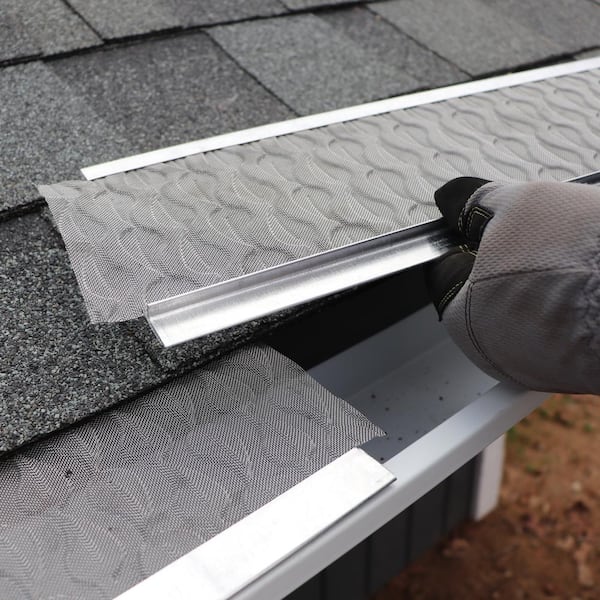Gutters play a critical role in protecting your home from water damage by channeling rainwater away from the roof, walls, and foundation. However, when gutters become clogged with leaves, branches, and other debris, they can quickly lose their ability to function properly. Blocked gutters can lead to water overflow, rotting wood, damage to the roofline, and costly repairs.
One of the most common causes of gutter clogs is leaf and branch accumulation, especially during the fall season when trees shed their leaves. Fortunately, there are several strategies to prevent leaves and branches from blocking your gutters and ensure that your system works efficiently year-round.
In this article, we’ll explore effective methods for keeping your gutters clear of leaf and branch blockages and maintaining a functional drainage system for your home.
1. Regular Gutter Cleaning
The simplest and most effective way to prevent leaf and branch blockages in your gutters is by cleaning them regularly. While cleaning your gutters may not be the most glamorous task, it is essential for preventing clogs and water damage.
- Clean at Least Twice a Year: Clean your gutters at least twice a year—once in the fall, after the leaves have fallen, and once in the spring to remove debris that has accumulated over the winter. If you have a large number of trees near your home, you may need to clean your gutters more frequently.
- Inspect After Storms: Strong winds or heavy storms can knock loose leaves and branches into your gutters, so it’s a good idea to check them after severe weather conditions.
Cleaning your gutters regularly will remove leaves, twigs, and other debris before they can create blockages that can lead to overflowing gutters.
2. Install Gutter Guards
Gutter guards are one of the most effective ways to keep leaves and branches from entering your gutters in the first place. These protective covers sit on top of your gutters and prevent larger debris, such as leaves and twigs, from entering while still allowing water to flow through.
- Mesh Gutter Guards: Fine mesh screens block leaves, seeds, and twigs but allow rainwater to filter through. These are ideal for homes with a lot of trees and larger debris.
- Leaf Filter Gutter Guards: These use surface tension to allow water to flow into the gutter while causing debris to slide off the surface. This type is excellent for homes with pine needles or fine debris.
- Solid Gutter Covers: These covers completely shield your gutters from debris, ensuring that only water gets into the system. They’re perfect for homes with significant tree coverage.
By installing gutter guards, you significantly reduce the chances of leaves and branches clogging your gutters, and you’ll spend less time cleaning them.

3. Trim Overhanging Branches
Trees that hang directly over your roof or gutters are a major source of leaf and branch debris. While it may not be possible to remove all trees from your property, you can trim back branches that are close to your gutters.
- Regularly Trim Tree Branches: Keep branches at least 10–15 feet away from your roofline to minimize the amount of debris falling into the gutters. This will also reduce the likelihood of branches breaking off and falling into your gutters during storms or windy conditions.
- Remove Dead or Weak Branches: Dead or weak branches are more likely to break during a storm and cause a blockage in your gutters. Regularly inspect and remove any branches that are at risk of falling.
Trimming overhanging branches not only reduces the amount of leaf and branch debris in your gutters but also helps prevent potential damage to your roof and gutters from falling limbs.
4. Install Downspout Screens
Downspouts play a crucial role in channeling water away from the gutters. If leaves and branches make it past the gutter guards, they can clog the downspouts, causing water to back up in the gutters. To prevent this, install screens or strainers in your downspouts.
- Mesh or Plastic Strainers: These simple devices fit into the downspouts and catch large debris before it can enter the drainpipe. They can be easily removed and cleaned during routine gutter maintenance.
- Leaf Catchers: Some homeowners opt for leaf catchers that fit at the top of the downspout to filter out debris before it causes a clog.
By using downspout screens, you ensure that water flows smoothly through the system, even if some debris makes it into the gutters.

5. Maintain the Roof and Surrounding Area
Your roof can be another major contributor to gutter blockages. Leaves, twigs, and even small branches can accumulate on the roof and eventually end up in the gutters. Keeping your roof clean will help prevent debris from getting into the gutters.
- Regular Roof Maintenance: Check your roof for any debris and remove it with a roof rake or broom. This is especially important after storms or high winds when debris may be scattered across your roof.
- Check Roof Vents: Roof vents and other openings can trap debris, which may eventually fall into the gutters. Clean these areas periodically to prevent a build-up of material that could make its way into the gutters.
A well-maintained roof will reduce the amount of debris falling into your gutters, making it easier to prevent blockages.
6. Use a Gutter Cleaning System
If you’re looking for a more convenient solution to prevent leaf and branch blockages, consider using a gutter cleaning system that allows you to clean your gutters from the ground.
- Telescoping Gutter Cleaning Tools: These extendable poles allow you to reach your gutters without using a ladder. Attachments such as scoops or brushes can help clear away leaves and twigs.
- Leaf Blowers and Vacuums: Some leaf blowers come with gutter cleaning attachments that let you blow out debris from your gutters, while wet/dry vacuums can suck up leaves and small twigs.
These systems can make it easier to clean your gutters and remove debris without the need for a ladder, improving safety and efficiency.

7. Consider Gutter Pitch Adjustment
If your gutters aren’t draining properly or you’re experiencing frequent blockages, the pitch (or slope) of your gutters may be incorrect. Gutters should have a slight downward slope towards the downspouts to ensure that water flows freely.
- Check for Low Spots: Low spots in your gutters can cause water to pool and debris to accumulate. Adjusting the pitch of your gutters ensures proper drainage and reduces the likelihood of clogs.
- Hire a Professional: If you’re unsure about the pitch of your gutters, consider hiring a professional to inspect and adjust them for optimal performance.
Properly pitched gutters will prevent debris from collecting in low spots and help the water flow smoothly to the downspouts.
8. Choose the Right Gutter System for Your Home
When it comes to preventing leaf and branch blockages, the type of gutter system you have plays a crucial role. Some gutter systems are designed to handle higher volumes of debris, while others are better suited for homes in areas with fewer trees.
- K-Style Gutters vs. Half-Round Gutters: K-style gutters, which are the most common type, have a flat back and can handle a moderate amount of debris. Half-round gutters, with a more rounded shape, are better for homes surrounded by trees as they offer less surface area for debris to collect.
- Consider Larger Gutters: If you have a large property with numerous trees, larger gutters may be necessary to handle the increased flow of water and debris.
Choosing the right gutter system for your home can make a big difference in how well your gutters manage leaf and branch blockages.
Conclusion
Preventing leaf and branch blockages in gutters is essential for maintaining a functioning and efficient drainage system. By cleaning your gutters regularly, installing gutter guards, trimming overhanging branches, and maintaining your roof, you can significantly reduce the chances of blockages and ensure that your gutters perform at their best. Proactive maintenance and the use of the right tools can save you time, money, and the hassle of dealing with clogged gutters.

